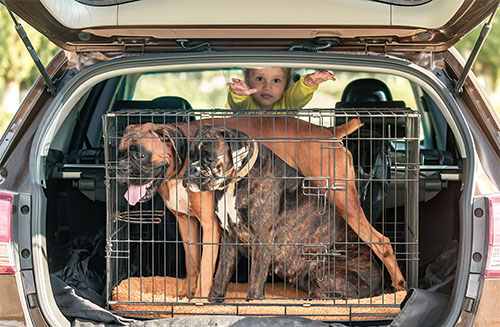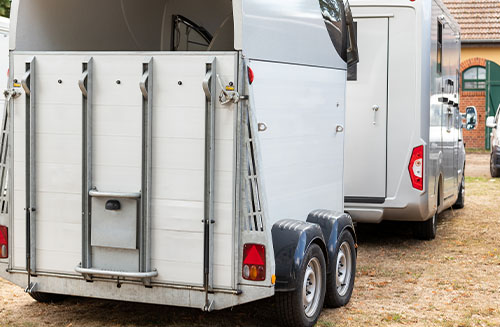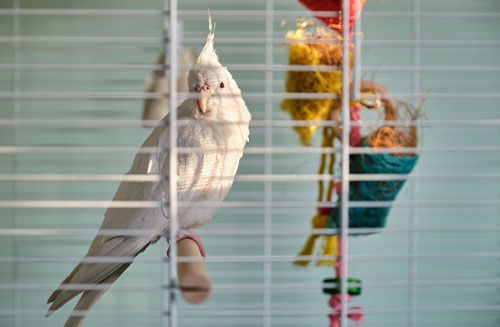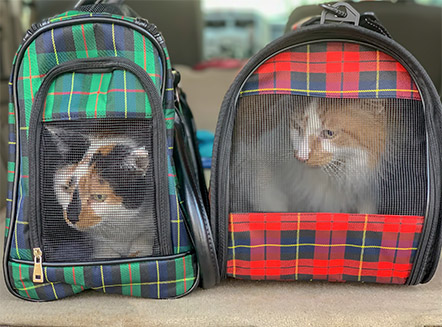
Travelling with pets can be a fun experience when the destination is full of adventure, but it also comes with its own set of challenges. As much as we love our furry friends, they can be a distraction while we’re driving, and their safety should be a top priority.
Whether you’re taking a short trip to the park (or *close your ears pets*… the vets) or embarking on a long road trip, there are certain steps you can take to ensure that you and your pet arrive at your destination safely.
In this blog, we’ll explore some tips and best practices for driving safely with pets, including what the law requires for safe travels, how to secure them properly, and how to keep them comfortable and calm while on the road. So buckle up, grab your pet, and let’s get started!
Pet Travel Regulations
The UK Highway Code provides guidelines for travelling with pets in a vehicle. These guidelines are in place to ensure that both the driver and the pet remain safe and comfortable during the journey.
So, if you’re wondering what the driving with pets law entails for you and your furry friends, then we have broken it down so you can transport them safely and above all – within the law.
Cats and Dogs
The Highway Code states that cats and dogs should be suitably restrained while travelling in a vehicle. This can be achieved through the use of a pet carrier, a suitable seatbelt, or a pet guard.
Pet carriers should be placed in a secure location in the vehicle, while dog seatbelts and dog guards should be used to prevent the dog from moving around or being thrown forward in the event of a sudden stop or collision.

Horses
Furthermore, the Highway Code states that horses being transported on the road should be transported in a suitable trailer or horsebox that is designed for the purpose.
The vehicle should be large enough to allow the horse to stand comfortably and have sufficient room to turn around.
It should also be adequately ventilated and well-lit, with suitable flooring and partitions to prevent the horse from slipping or being thrown around during transit.
Birds, Reptiles and Rodents
While there are no specific rules regarding the transportation of these animals, there are some general principles that should be followed to ensure the safety and well-being of both the animals and the driver.
For birds, it is recommended that they are transported in a suitable carrier that allows for adequate ventilation and space for them to move around. The carrier should be securely fastened in the vehicle to prevent it from moving during transit. It is important to avoid exposing the bird to direct sunlight or drafts, and to provide them with water and food if the journey is long.

Reptiles, such as snakes and lizards, should be transported in a secure container that is large enough for them to move around comfortably. The container should be well-ventilated and escape-proof, with a secure lid that is fastened tightly. It is also important to ensure that the reptile is kept at a suitable temperature during transit, as they are sensitive to changes in temperature.
Rodents, such as hamsters and guinea pigs, should also be transported in a secure carrier that is well-ventilated and escape-proof. The carrier should be lined with soft bedding material to provide comfort and prevent injury. It is important to avoid exposing the rodents to direct sunlight or drafts, and to provide them with food and water if the journey is long.
Stress-Free Pet Travel: How to Reduce Pet Anxiety
Travelling in a car can be a stressful experience for pets, particularly if they are not used to it. However, there are several steps that pet owners can take to reduce their pet’s anxiety and make car journeys more comfortable for them.
One important step is to gradually acclimate the pet to car travel by taking short trips and gradually increasing the duration and distance of each journey. Creating a comfortable and secure space for the pet in the car, such as a carrier or crate, can also be helpful.
It is important to plan the journey carefully to avoid prolonged periods of confinement, and to take regular breaks to allow the animals to stretch their legs, have a drink, and use the toilet if necessary. In addition, drivers should plan their route carefully to avoid busy roads and traffic congestion where possible.
IMPORTANT TIP: Change your driving style to be suitable for pets!
In general, drivers should take care to drive smoothly and avoid sudden stops or starts that could startle or injure the animals. Specifically, if you’re transporting horses, take corners and bends slowly to prevent the horse from losing its balance or being thrown to one side.
- Additionally, playing calming music or using pheromone sprays can help to reduce the pet’s anxiety levels. Calm music has been shown to have a positive effect on the nervous system, helping to slow the heart rate and promote relaxation. This can help to counteract the stress response that a pet may experience when travelling in a car.
- Similarly, pheromone sprays are designed to mimic the natural calming scents produced by pets, which can help to create a sense of familiarity and security. These sprays can help to reduce anxiety levels by providing a sense of comfort and reassurance for the pet.
- The Highway Code regulations state that it is never safe to leave pets unattended in a vehicle, especially in hot weather. Even with the windows open, the temperature inside a car can rise quickly and become dangerous for pets, potentially leading to fatal consequences.
- To avoid such risks, pet owners must also be mindful when opening doors or windows, ensuring that their pets cannot escape. This applies to all types of pets, whether it be dogs or chinchillas.
- Finally, providing plenty of positive reinforcement, such as treats and praise, can help to create a positive association with car travel and make the experience more enjoyable for the pet.
Car Adaptions for Pets
Pet owners can make several car amendments to cater to the needs of their pets, regardless of the type of animal.
Dog Car Travel
If you’re travelling with dogs and cats, there are seat belts, car harnesses, and barriers that can be installed to keep them secure and prevent them from distracting the driver.
There are also specialised dog or cat car seats available that elevate them for better visibility and comfort.
Transporting a Horse
For horses, specialised trailers are designed with sufficient ventilation and space to ensure their comfort and safety during transport.
Also, the use of towing mirrors when transporting a horse trailer is crucial as it provides the driver with enhanced visibility, allowing them to safely monitor the position and behaviour of the trailer and the horse during the journey.
Reptile, Rodent and Bird Transportation
When transporting birds, reptiles, and rodents, secure carriers or cages with adequate ventilation should be used. As well, heat sources and water supplies should be supplied to ensure their comfort during transport.
Additionally, when transporting big cages or carriers, it is essential to secure them properly within the vehicle to maintain the animals’ safety and well-being during the journey.
Securing a birdcage or animal carrier in a car requires careful attention and one method to secure them is by using seat belts or cargo straps.
If you’re transporting birds, place the bird cage on a stable surface, such as the car floor or a secured seat, and wrap the seat belts or cargo straps around the cage, tightening them to keep the cage from shifting during the journey.

Use a pet carrier designed specifically for smaller pets. These often come with attachment points or hooks that can be secured with seat belts or straps.
Additionally, consider placing non-slip material beneath the cage to prevent it from sliding around. It’s important to avoid placing the birdcage near airbags or in areas where it could obstruct the driver’s visibility.
Regularly check the security of the cage throughout the journey to ensure it remains stable and safe for your furry friends. It’s important for pet owners to research and invest in the appropriate equipment to ensure their pets’ safety and comfort during car travel.